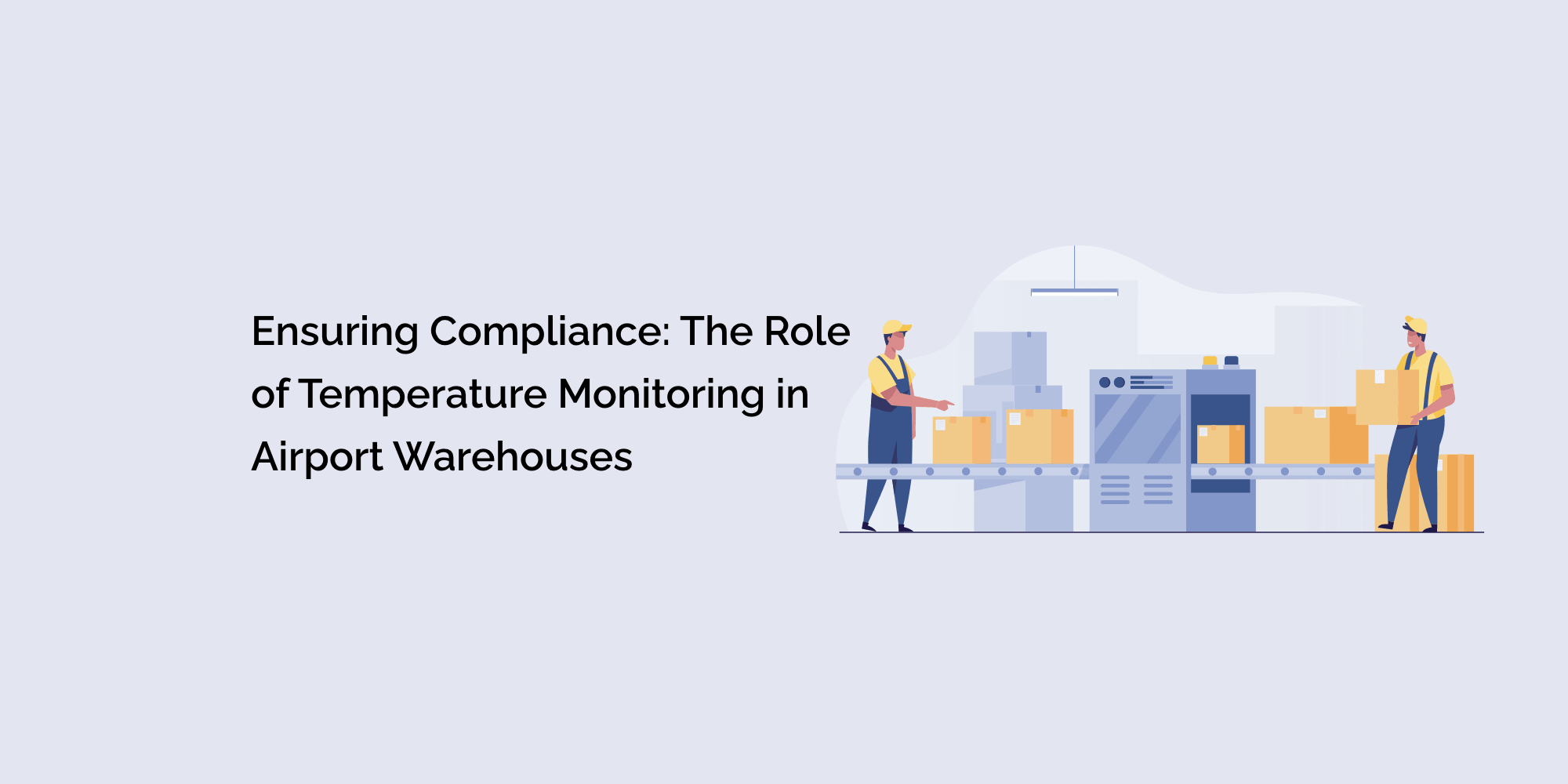Airport warehouses play a vital role in the global supply chain, serving as critical hubs for handling and storing temperature-sensitive goods. Pharmaceuticals, perishable foods, electronics, and other temperature-sensitive cargo require strict adherence to specified temperature ranges to maintain their quality, efficacy, and safety. Failure to comply with temperature regulations can lead to severe consequences, including damaged goods, financial losses, legal liabilities, and damage to a company's reputation.
In this blog, we will delve into the crucial role of temperature monitoring in airport warehouses and its significance in ensuring compliance with industry regulations, maintaining product integrity, and upholding the highest standards of quality and safety.
Importance of Temperature Monitoring in Airport Warehouses
Temperature-sensitive cargo is particularly vulnerable to temperature fluctuations during storage and transit. Maintaining the correct temperature range is essential for the following reasons:
a. Product Integrity: Temperature-sensitive goods can lose their potency, freshness, and overall quality if exposed to improper temperature conditions.
b. Regulatory Compliance: Industries such as pharmaceuticals, healthcare, and food must comply with stringent temperature regulations to ensure product safety and efficacy.
c. Legal Implications: Failure to comply with temperature regulations can lead to legal consequences, including fines, product recalls, and damage to a company's reputation.
d. Customer Trust: Consistently delivering temperature-sensitive cargo in optimal condition fosters customer trust and loyalty.
Compliance with Industry Standards and Regulations
Airport warehouses must adhere to various industry standards and regulations concerning temperature control and monitoring. Key regulatory bodies include:
a. Good Distribution Practice (GDP): GDP guidelines provide standards for the storage and transportation of pharmaceutical products, ensuring their quality and integrity throughout the supply chain.
b. Good Manufacturing Practice (GMP): GMP standards focus on maintaining the quality and safety of pharmaceutical products during manufacturing, storage, and distribution.
c. Hazard Analysis and Critical Control Points (HACCP): HACCP principles are applied to the food industry to identify and control potential hazards, including temperature-related risks.
d. International Air Transport Association (IATA) Temperature Control Regulations: IATA sets temperature control requirements for the transportation of pharmaceuticals and other temperature-sensitive cargo by air.
Continuous Temperature Monitoring
Continuous temperature monitoring is crucial for ensuring compliance with industry regulations and maintaining product integrity throughout the warehouse's operation.
a. Real-time Data: Continuous monitoring systems provide real-time temperature data, enabling prompt responses to temperature deviations.
b. Automated Alerts: Implement automated alerts that notify warehouse staff and management when temperature excursions occur, allowing for immediate corrective actions.
c. Data Logging and Analysis: Continuous monitoring systems store temperature data over time, providing valuable insights for analysis and optimizing warehouse temperature management.
Compliance Documentation and Reporting
Maintaining accurate and comprehensive documentation is essential for demonstrating compliance with industry regulations and for providing evidence during audits and inspections.
a. Digital Records: Implement digital record-keeping systems to store temperature data, calibration logs, and other relevant information securely.
b. Reporting Tools: Utilize temperature monitoring systems to generate compliance reports, making it easier to present evidence of adherence to industry regulations.
c. Audit Trail: A complete audit trail of temperature data and monitoring activities helps warehouse managers identify potential issues and maintain compliance with industry guidelines.
Validation and Calibration
Temperature monitoring systems must undergo validation and calibration processes to ensure accurate and reliable measurements.
a. System Validation: Conduct system validation to verify that the temperature monitoring system meets the required specifications and performance criteria.
b. Sensor Calibration: Regularly calibrate temperature sensors to ensure their accuracy and reliability. Calibration intervals should align with industry standards.
SOPs and Staff Training
Establishing Standard Operating Procedures (SOPs) and providing comprehensive staff training are essential to ensure that temperature monitoring protocols are consistently followed.
a. SOP Development: Develop detailed SOPs for temperature monitoring, equipment calibration, response protocols, and data management.
b. Training Programs: Regularly train warehouse staff on SOPs, temperature monitoring best practices, and the importance of compliance with industry regulations.
c. Competency Assessments: Conduct competency assessments to ensure that staff members are adequately trained to perform their temperature monitoring responsibilities.
Data Security and Integrity
Protecting temperature data from tampering or unauthorized access is critical for maintaining compliance and ensuring the accuracy of recorded information.
a. Data Encryption: Implement data encryption protocols to protect temperature data during storage and transmission.
b. Access Control: Restrict access to temperature monitoring systems and data to authorized personnel only.
c. Data Backup: Regularly back up temperature data to secure servers or cloud-based storage solutions to prevent data loss.
Conclusion
Temperature monitoring plays a pivotal role in ensuring compliance with industry regulations and maintaining the integrity of temperature-sensitive cargo in airport warehouses. Continuous monitoring, compliance documentation, system validation, and staff training are essential elements of an effective temperature monitoring strategy.
By adopting robust temperature monitoring practices, airport warehouses can safeguard the quality and safety of temperature-sensitive goods, comply with industry standards, minimize risks of regulatory non-compliance, and earn the trust and confidence of their customers and partners. As the global logistics landscape evolves, a strong focus on temperature monitoring will remain a critical component of successful airport warehouse operations.








